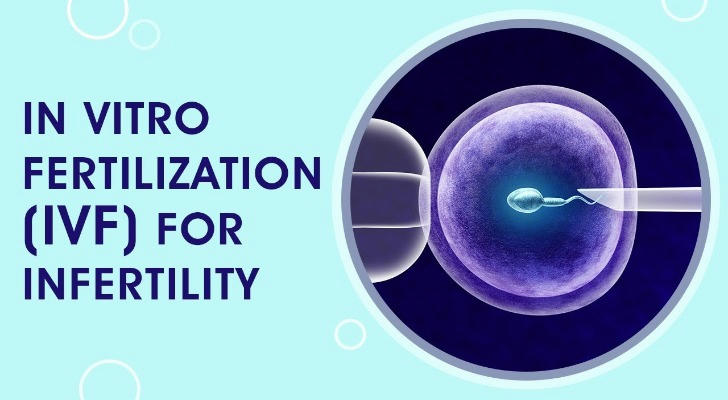🧬 IVF: A fertility journey from expectation to reality
When natural conception has not yet resulted in results, more and more families are beginning to consider IVF. IVF is not only a technical process, but also a comprehensive challenge across time, body and emotions.
Ⅰ.What is IVF?
IVF (In Vitro Fertilization) is an assisted reproductive technology. By combining eggs and sperm in the laboratory to form embryos and then implanting them into the uterus, it helps individuals or families who cannot conceive naturally to realize their desire to have children.
Originally used for problems such as fallopian tube blockage, the scope of application has now expanded to include ovulation disorders, insufficient sperm motility, multiple miscarriages, unexplained infertility, LGBT families, single women, etc.

Ⅱ.What are the specific processes of IVF?
1️⃣ Preliminary evaluation and program formulation
Before treatment, the doctor will arrange for the couple to undergo basic examinations such as blood tests, ultrasound, and semen analysis to evaluate ovarian function, uterine environment, and sperm quality, and formulate a personalized stimulation and transplantation plan based on this.
2️⃣ Stimulate ovulation (controlled ovarian stimulation)
Women need to inject ovulation-promoting drugs every day for about 8~12 days to allow multiple follicles to develop simultaneously. During this period, blood draws and vaginal ultrasound examinations are required regularly to adjust the drug dosage and determine the timing of egg retrieval.
3️⃣ Egg and sperm retrieval
When the follicles are mature, the egg retrieval operation is performed 36 hours after the injection of the egg-breaking needle, usually under sedation and anesthesia; on the same day, the man collects semen (or uses frozen/donated sperm samples).
4️⃣ Laboratory fertilization and embryo culture
The egg and sperm combine in vitro, and about 70%~80% can be successfully fertilized. The embryo then develops in the culture medium until the 3rd or 5th day (blastocyst stage), during which the quality, cell division rate, etc. will be evaluated.
Some patients may choose to undergo embryo screening (PGT), which can screen for chromosomes or specific genetic problems and is not a necessary step.
5️⃣ Embryo transfer
The doctor decides the transfer strategy based on the quality of the embryo, the state of the endometrium, and the medical history. Most clinics advocate single embryo transfer (Single Embryo Transfer) to reduce the risk of multiple pregnancies. The remaining high-quality embryos can be frozen for future use.
6️⃣ Luteal support and pregnancy test
After the transfer, progesterone drugs are usually used to support the endometrium, and blood tests are performed 10~12 days later to confirm whether the pregnancy is confirmed.
Ⅲ.Which group of people are more suitable for IVF?
Although not every infertile couple has to go to the IVF stage, the following groups are often recommended as priority:
- Multiple attempts to conceive naturally failed (usually ≥1 year)
- Fallopian tube dysfunction or removal
- Severely insufficient sperm concentration or motility
- Multiple failed artificial insemination (IUI)
- Advanced age or ovarian dysfunction
- Single women or lesbian couples

Ⅳ.Realistic considerations of IVF
💡 Success rate is not a uniform number
The success rate of IVF is affected by multiple factors: Women's age is the key, and the live birth rate of older people drops significantly. Ovarian function, embryo quality, uterine condition and basic health status also determine the success or failure of the cycle.
According to CDC data, the success rate of each transplant can reach more than 40% for people under 35 years old, while it drops to about 20% for those over 40 years old.
💡 Emotion and time management are hidden challenges
IVF cycles are intensive and fast-paced, requiring frequent leave, injections, and medical treatment. Some patients need to try multiple times. Emotional anxiety and psychological gap after failure are stressors that most people do not expect but are common.
💡 Costs should not be ignored
IVF treatment costs are not small. In addition to the basic process, it also includes additional costs such as drugs, freezing, and screening. Multiple cycles may further increase financial pressure. However, some areas provide insurance coverage or clinic discounts, such as multi-cycle packages, installment payments, and income discounts. Knowing the policy in advance can help reduce the burden.
Ⅴ.Case analysis
Jane, a 38-year-old middle school teacher in New York, decided to try IVF because of years of infertility. Faced with high treatment costs, she actively applied for relevant IVF subsidies to reduce financial pressure. At first, she chose single embryo transfer, but the first round of transfer was unsuccessful. After actively communicating with the doctor for the second time, she finally got pregnant successfully.
She said with emotion: "Financial support allows me not to worry about the cost, and I can focus more on cooperating with the treatment. This process tests patience and decision-making, and it is very important to maintain communication with the doctor."
Conclusion
IVF is not a "last resort", but a reasonable choice for families in need. The IVF process is rigorous and the medical resources are mature, but the process is not easy and requires physical, emotional and decision-making preparation.
Success is not achieved overnight. Waiting, failure and starting again in the process are all part of this journey. Only by making sufficient preparations, finding the right doctor and being patient can you really go further.
